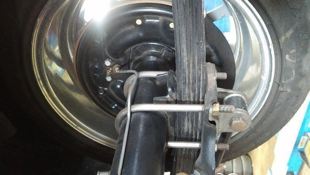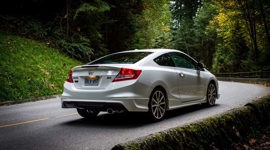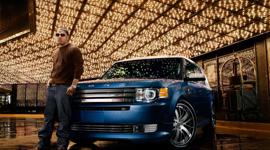It was a car from the height of the horsepower wars, but it wasn't the biggest engine around. It wasn't even the biggest engine available in that car. It was a car designed to compete and win in one specific racing series. It is one of the most iconic cars of the late 1960s and early 1970s. It was the Boss 302. And this one is our autoTRADER.ca Find of the Week.
Just two years after the introduction of the pony car, the Ford Mustang was winning on the track as much as it was on the showroom floor. Under the direction of racing legend Carroll Shelby, Ford Mustangs were winning in the SCCA Trans American Sedan Racing series. But when General Motors introduced the Camaro, they had a mission. Beat the Mustang. Everywhere.
Chevrolet launched the Z/28 Camaro in 1967. It had a 4.9L V8 (302 cubic inches), optimised for the engine displacement rules of the Trans Am series. It had a four-speed gearbox and power brakes. The Z/28 was a shot across the bow of Ford and Shelby, and it dominated the 1968 Trans Am series winning 10 of 12 races with Mark Donohue at the wheel.
Obviously, Ford wanted to fire back. But they didn't have a 302 cubic inch engine that would make a dent in the power of the Camaro. Ford had a 7.0L (429 c.i.) engine that was on the way, but it was a monster that only saw duty in the Boss 429 Mustang so that Ford could use it in NASCAR. It was far too big and heavy for the Trans Am road racing series. What Ford did have were two small block V8s that they thought they could make Trans Am race-worthy.
Ford engineers took the Windsor V8 block - named after the city where it was built - and combined it with the cylinder heads from the still in development Cleveland V8. The Cleveland engine was a 5.7L (351 c.i.) design, and the Windsor was a 5.0L. That gave the franken-engine massive cylinder heads and the ability to flow more air than the competition.
It wasn't an entirely stock Windsor engine block either. The engine had thin wall, high nickel casting for lighter weight and greater strength. It had four-bolt main bearings to help keep the crankshaft in place under the stress of racing. Of course, there was a special camshaft for more power, an aluminium intake, and a 780 cfm carburetor.
In street trim, the new engine was rated at 290 hp and 290 lb-ft. But this was an era where manufacturers low-balled power figures on their top models to keep the insurance companies at bay. Race-ready versions of the engine made 470 hp. Street cars could rev to a huge 8,000 RPM, and race cars reportedly spun to 9,000 RPM or more.
Now the question for Ford's team was how to make a car that was originally designed with a 100 hp inline six in mind handle nearly fives times that power. Ford installed beefier coil springs and heavy rear leafs. Staggered rear shocks were installed to help prevent wheel hop that could break the rear axles. The brakes gained power assist and a massive front sway bar was added.
Two four-speed gearboxes were offered, one with a wide ratio spread for faster tracks and a close-ratio box for tighter tracks.
Now Ford needed a design to show off the changes and sell enough street cars to take it to the track. Enter Ford designer Larry Shinoda. He added the C-stripe over the nose as well as the big hood stripe. The design got rid of the fake scoops on the rear fenders too. A front spoiler and rear wing were added, making it one of the first production cars to have those aerodynamic pieces.
Even the name came from Shinoda, who referred to the secret project as "the boss's car" whenever he was asked what he was working on. Or as a nod to then new Ford President Semon Knudsen, the man who brought Shinoda from GM to Ford. Like all good automotive stories, it all depends on who you ask.
The car entered Trans Am for 1969 and 1970. It took a year to sort everything out, but the Boss 302 accomplished its goal and won the Trans Am championship for 1970.
So it was a race car that Ford had to make street-able so that they could race it. So how did it work as a street car? The answer is amazingly. Before this, fast Mustangs had two handling settings: plowing understeer and tire spinning oversteer. Not the Boss. The Boss could handle. Hang the tail out, or tuck into a corner. It was up to the driver this time. Car and Driver's review from 1969 said it was "Without a doubt the Boss 302 is the best handling Ford ever to come out of Dearborn." But it was still more race car than street car, with big noise and visceral power delivery.
Which is probably why Ford only built a little over 7,000 of the cars. It didn't help that at about $4,000 the car was $1,500 more than a base Mustang.
Our Find of the Week is a 1970 model. That means it has the hockey stick stripes running down the fender. It also gets a new grille that dropped two of the headlights for a pair of vents. It is originally a Canadian car, and the seller says only about 600 were sold here. It's actually for sale at the Etobicoke dealer that sold it brand new.
This car was originally a racer, but it has had a complete frame-off restoration and engine rebuild about 20 years ago. It has power brakes and steering, and those sweet, sweet 1970s louvers on the back glass. And if you get tired of the fury of that V8, there is an upgraded Clarion stereo.
If you want one of the baddest offspring of the power and pony car wars, this is it. The 1970 Boss 302 Mustang.


































